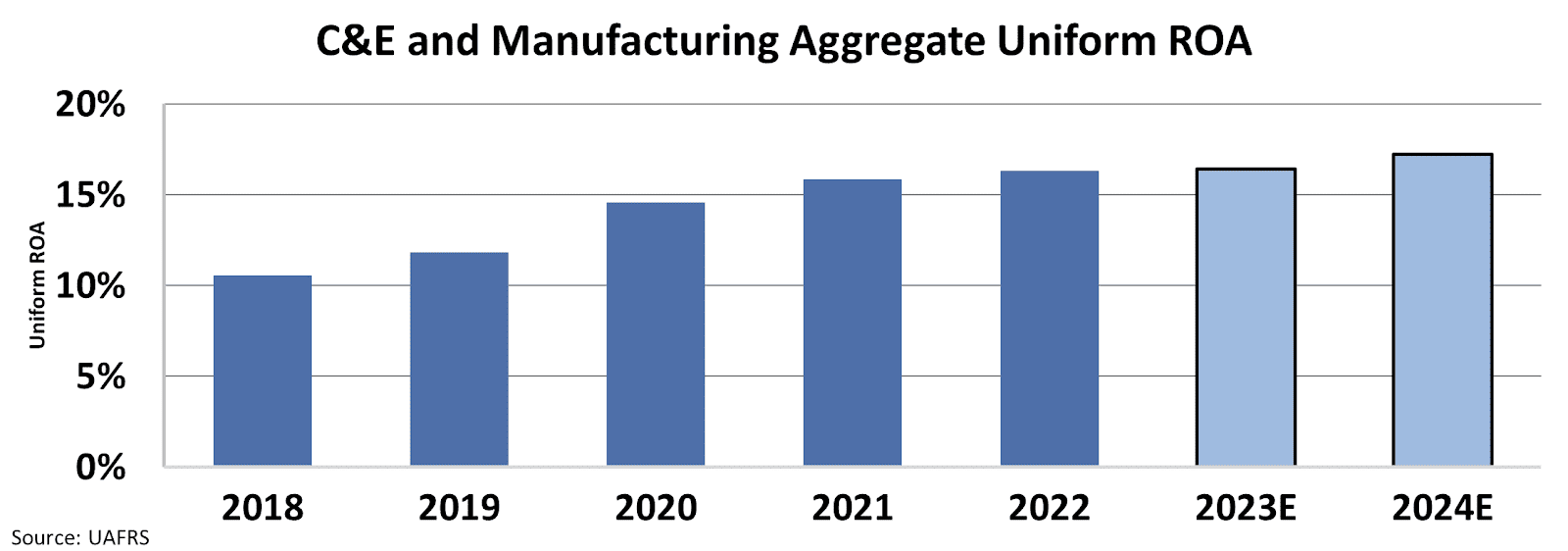This Industry Stands To Benefit From Big Government Subsidies

Since coming into office, President Biden has committed trillions of dollars toward rebuilding American industries.
He’s introduced a series of incentives for domestic manufacturers in key industries, aiming to generate employment opportunities for hundreds of thousands.
In late 2021, he signed the $1.2 trillion Infrastructure Investment and Jobs Act aimed at rebuilding all kinds of U.S. infrastructure.
And one year ago, he signed the CHIPS and Science Act that will direct $280 billion in spending towards the semiconductor industry. He also signed the Inflation Reduction Act (“IRA”) that included $369 billion in spending on energy security.
The IRA has kickstarted U.S. investment in green energy and it kicked off a battle of subsidies between the U.S. and peers. You see, ally nations like Germany and Japan are worried that the U.S. is trying to dominate every industry, and if they don’t match its subsidies, their domestic industries may fall behind.
In June, Germany launched a multi-billion-dollar subsidy program to help its manufacturing industry decarbonize, and Japan plans on subsidizing its semiconductor industry in an attempt not to lose out to the U.S.
A lot of the discussion about these subsidies has focused on whether they are going to create a race to the bottom. The concern is, these supposedly allied nations could all be competing and spending billions just to keep their industries from losing out to the U.S.
However, there’s a more important discussion that doesn’t seem to be as popular.. All this spending is creating clear winners and losers within the U.S. stock market.
Today, we’re going to talk about one of the biggest winners and show you the importance of picking them.
Investor Essentials Daily:
The Monday Macro Report
Powered by Valens Research
The U.S. wants to see places formerly ravaged by deindustrialization and rustbelt decay come back to life. These subsidies are a chance to make this happen.
As factories moved abroad, we abandoned thousands of towns and cities around the country.
However, all of these spending bills means hundreds of billions of dollars are going to be reinvested into old factories, roads, and bridges. Project developers estimate the creation of up to 85,000 new jobs, too.
The biggest winners of this are going to be industrial companies, in particular, construction and engineering (“C&E”) and manufacturing companies.
To rebuild these once illustrious cities of industry, companies will need to build new factories, offices, and other facilities.
This is where C&E companies come into play.
The subsidies are likely to stimulate demand for new industrial projects. This means that C&E companies are going to have their plates full actually working on all of these construction projects.
And what’s good for C&E is also good for manufacturing. Manufacturing companies make a lot of the equipment and materials that C&E companies use to get their jobs done.
As long as C&E companies are in high demand, manufacturing will win as well.
Moreover, subsidies can reduce the costs for these companies undertaking industrial projects. As a result, these savings might lead to better pricing for both C&E and manufacturing services, boosting their profitability.
We are not alone in thinking that.
Construction and engineering firms have already increased their profitability thanks to these actions by the government and favorable pricing in recent years.
The industry’s aggregate Uniform return on assets (“ROA”) jumped from 10% in 2018 to 16% in 2022. Analysts expect this trend to continue going forward, with aggregate ROA remaining above 17% in the next two years.
Even with a possible recession on the horizon, analysts think C&E and manufacturing will keep getting stronger.
We still think we’re likely heading for a recession some time next year. While that will put pressure on a lot of sectors, it won’t hurt all sectors equally.
For instance, if interest rates stay high, real estate will be a difficult sector to invest in, as rising purchasing costs will hurt demand. More than 50% of your portfolio’s performance has nothing to do with the stocks you pick. It has to do with the sectors you pick.
Considering how much spending is set to hit C&E and manufacturing companies, the industrials sector looks set up for success. We’d recommend spending time researching industrials, and specifically, the construction and engineering industry.
Best regards,
Joel Litman & Rob Spivey
Chief Investment Strategist &
Director of Research
at Valens Research





